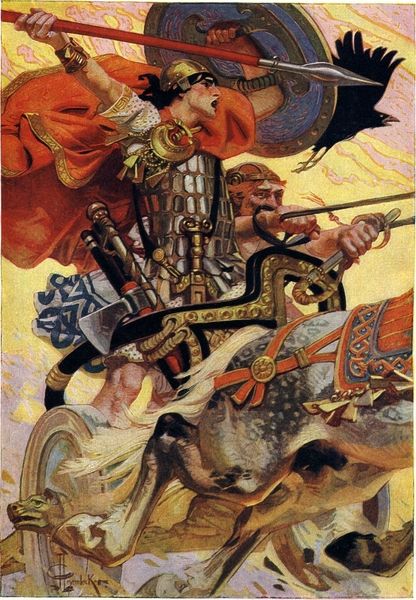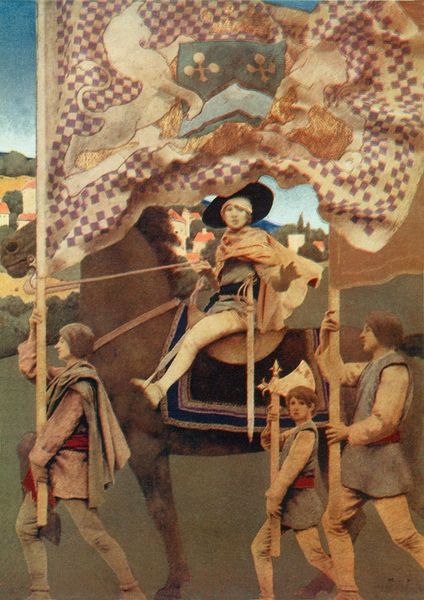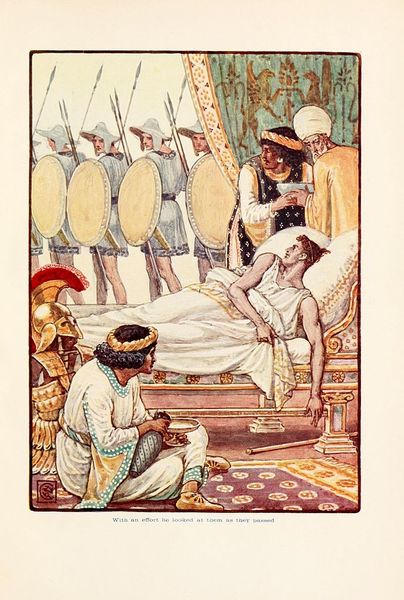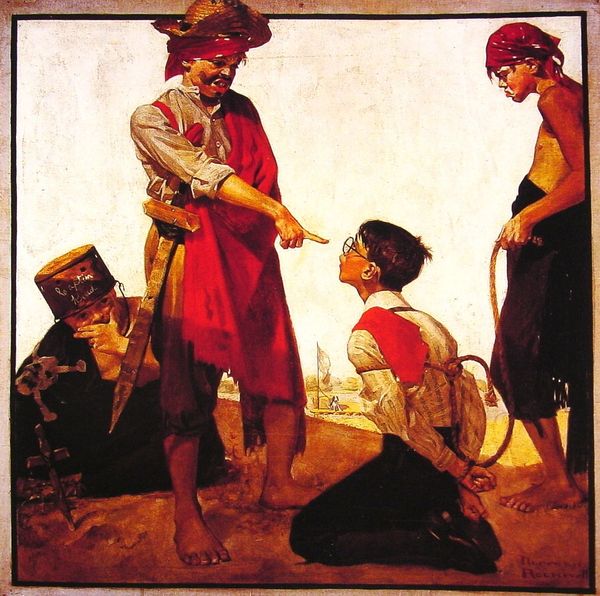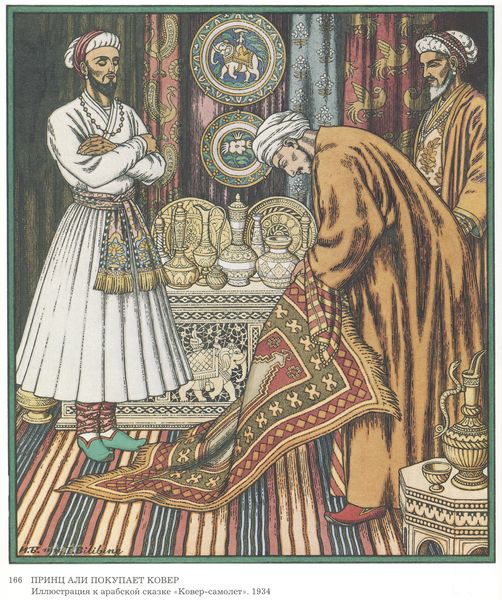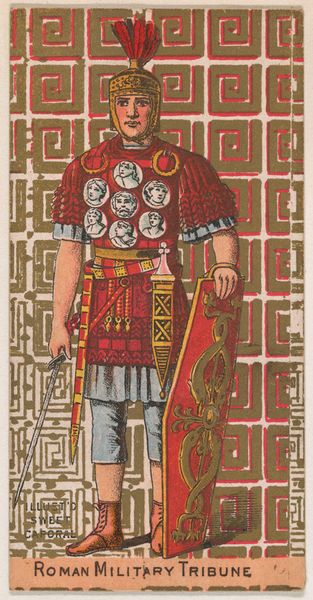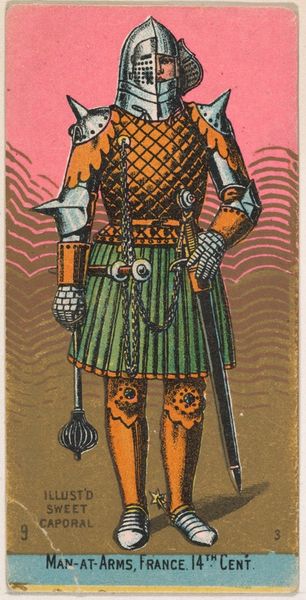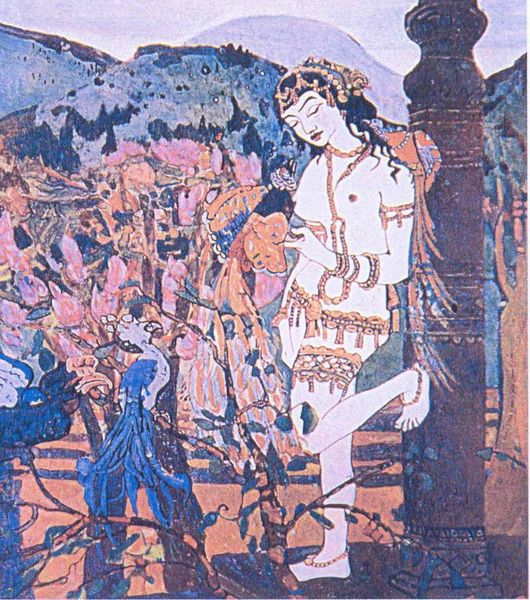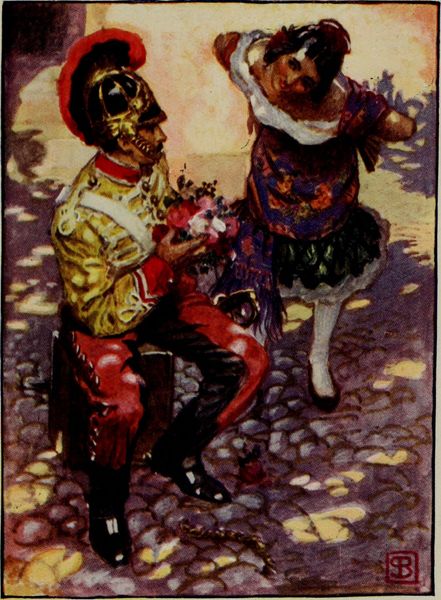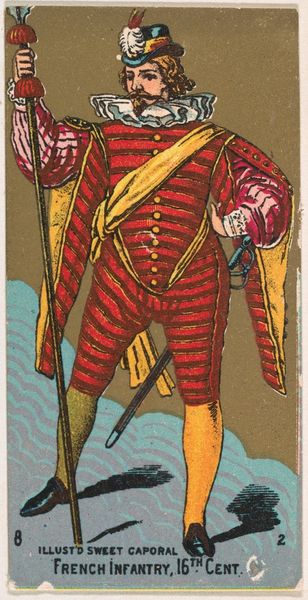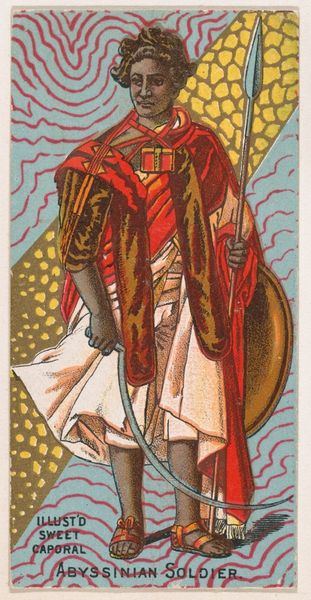
Copyright: Maxfield Parrish,Fair Use
Curator: Here we have Maxfield Parrish's "The Knave of Hearts," a watercolour illustration from 1925. Editor: My initial reaction is one of enchantment. The use of colour, particularly those luminous hues, evokes a dreamlike, fantastical atmosphere. The composition is symmetrical, but somehow still feels playful, rather than rigidly formal. Curator: Absolutely. Parrish made a career from creating these kinds of idyllic scenes, often drawing on folklore and popular narratives. There is something interesting about the figures themselves, frozen in what is potentially a dramatic moment. Parrish’s work was, on one hand, commercially successful, being found on calendars, books, advertisements, etc. But on the other hand, it raises some important questions: can mass-produced art be of high artistic merit? Was he simply feeding a cultural sweet tooth for nostalgic fantasy? Editor: The texture! I find myself focusing on it, particularly in the robes of the central figure. It suggests a tangible, almost sculptural quality to the fabrics. Note also how light catches the metallic surfaces of the guards’ armour; this piece revels in the interplay between smooth and textured forms, inviting closer contemplation. Curator: That tactile sense is crucial. Remember, much of his work found its way into print; that translation to mass media must have affected the viewer's experience and expectations. Was Parrish aware of this flattening of effect? The composition subtly echoes theatre stage design. I'm fascinated by how he merges traditional illustration, with its implied narrative purpose, and this consciously staged artificiality. What does that imply about our interpretation of the story within the image? Editor: A painting's role should be the emotional, aesthetic, and optical experience it offers viewers through line, shape, and light! "The Knave of Hearts" transcends a mere illustration, inviting us to admire its internal harmony. Curator: Perhaps both approaches are valid here. The painting invites us to interpret its intrinsic artistic choices and analyze its wider social and historical implications. Editor: I leave here reflecting on how an image that on first impressions seems traditional can have complexity.
Comments
No comments
Be the first to comment and join the conversation on the ultimate creative platform.
